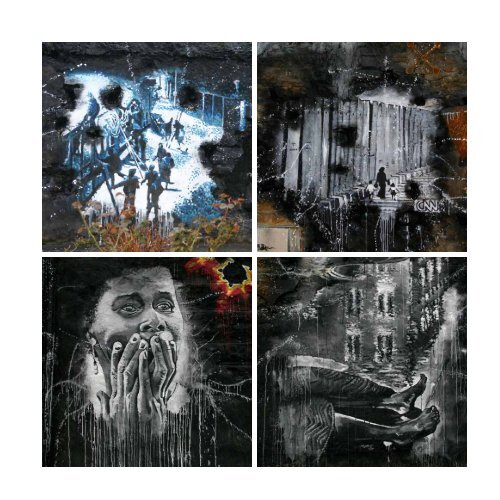Opus IX: Abode of Chaos / Demeure du Chaos 1999-2013
Is it to be considered a book? Or is it a magic object, each page of which being an original narrative of the Abode of Chaos rendered in a ground-breaking dreamlike vision. thierry Ehrmann: we put all our passion and folly into preparing this French-English Collector, the book of the decade: 504 pages / 4.5 kg / Square format – Edition bound – 11.8 in. x 11.8 in. and 1.97 inch-thick – includes the Opus IX from 1999 to 2013. A Note to Our Readers All the photographs, video stills, illustrations, handwritings, sketches, 3D modelling images, plans, maps and drawings are all part of the artworks and/or performances produced "in situ" at the Abode of Chaos. The images of artworks included in this book do not cover the Above of Chaos in its entirety but only a small part of it.
Is it to be considered a book? Or is it a magic object, each page of which being an original narrative of the Abode of Chaos rendered in a ground-breaking dreamlike vision. thierry Ehrmann: we put all our passion and folly into preparing this French-English Collector, the book of the decade: 504 pages / 4.5 kg / Square format – Edition bound – 11.8 in. x 11.8 in. and 1.97 inch-thick – includes the Opus IX from 1999 to 2013.
A Note to Our Readers
All the photographs, video stills, illustrations, handwritings, sketches, 3D modelling images, plans, maps and drawings are all part of the artworks and/or performances produced "in situ" at the Abode of Chaos.
The images of artworks included in this book do not cover the Above of Chaos in its entirety but only a small part of it.
You also want an ePaper? Increase the reach of your titles
YUMPU automatically turns print PDFs into web optimized ePapers that Google loves.
150 151<br />
Page 150<br />
Melilla et Ceuta (2005)<br />
Geder HaHafrada<br />
Katrina (2005)<br />
Page 151<br />
Jean-Paul II & Mehmet Ali Ağca<br />
Gaza is no different than a burning<br />
bus in Clichy. Through French<br />
eyes, the romanticism <strong>of</strong> ruins is<br />
glocal: simultaneously planetary<br />
and hyperlocal. It is this vision <strong>of</strong><br />
“glocal” that we are retranscribing.<br />
Mc Luhan’s prophecy has definitely<br />
been realized: we find ourselves in<br />
a global village having become glocal<br />
but certainly not in the best <strong>of</strong><br />
worlds. It is time now for the general<br />
public to establish its own value<br />
system, to size an image and<br />
measure its impact without the assistance<br />
<strong>of</strong> the media. Our works<br />
do not take stances but rather <strong>of</strong>fer<br />
means to decipher and analyze<br />
images in the 21st century. To suppress<br />
the media means to remove<br />
the supervision <strong>of</strong> its authority,<br />
freeing the imagination.<br />
Our spectators are relearning how<br />
to read images in a society where<br />
each <strong>of</strong> us, through the use <strong>of</strong> cell<br />
phones and digital cameras, are becoming<br />
our own reporters. Facing<br />
the thousands <strong>of</strong> images invading<br />
our daily lives and taking a certain<br />
few to transform them into<br />
works <strong>of</strong> art allows us to mark<br />
time and rediscover the fabulous<br />
imagination which photography<br />
has brought to human relations.<br />
Listening to people comment on<br />
“uncaptioned” photographs is highly<br />
fruitful.<br />
I remember this one particular<br />
photo taken in the London subway<br />
system where the crowd wanders<br />
through its tunnels. Most people<br />
saw in this image a religious vision<br />
<strong>of</strong> a mass converging towards<br />
light, others, alien like beings with<br />
their craniums distorted by the<br />
lens. This picture will also grace the<br />
covers <strong>of</strong> all international press.<br />
Through a pr<strong>of</strong>usion <strong>of</strong> comments<br />
from our spectators we can attest<br />
that uncaptioning gives the images<br />
its lost occult drama.<br />
The <strong>Abode</strong> could very well be a real<br />
time press agency, a witness <strong>of</strong><br />
this century, where one can read<br />
through a flow <strong>of</strong> art works, the<br />
delegendized history. This journey<br />
is atypical and constitutes alone<br />
one <strong>of</strong> the artistic approaches <strong>of</strong><br />
the <strong>Abode</strong> <strong>of</strong> <strong>Chaos</strong>.<br />
thierry Ehrmann<br />
Signe de guerre


